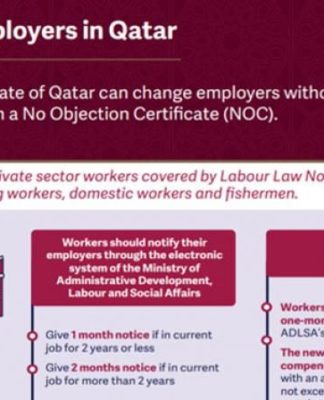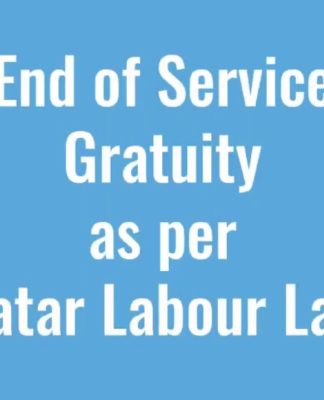Back to homepage / Middle East
FROM BLOCKADE TO SIEGE
‘No place is safe’ in Gaza as Israel lays siege to Hamas-held enclave
Israel laid “total siege” to the Gaza Strip on Monday, vowing to cut off food, water and electricity supplies to the impoverished enclave as it pounded the Hamas-ruled territory in retaliation for a brazen and bloody incursion that caught Israel’s vaunted security apparatus completely off guard.
Issued on: 10/10/2023 – 06:41
5 min
The rubble of the Yassin Mosque, destroyed in an Israeli airstrike, is seen at Shati refugee camp in Gaza City on October 9, 2023.02:14
The rubble of the Yassin Mosque, destroyed in an Israeli airstrike, is seen at Shati refugee camp in Gaza City on October 9, 2023. © Hatem Moussa, AP
By:
Benjamin DODMAN
Follow
Two days after Hamas militants launched a surprise attack from Gaza, killing hundreds of Israelis and abducting scores more, the Israeli army said it had largely regained control of southern settlements close to the Gaza Strip and moved to tighten the noose around the Palestinian enclave.
Tanks and drones were deployed to guard breaches in the border fence that Hamas militants poured through early on Saturday, while the military summoned 300,000 reservists – portending greater fighting ahead and a possible ground offensive into Gaza.
“The price the Gaza Strip will pay will be a very heavy one that will change reality for generations,” Defence Minister Yoav Gallant said while visiting one of the towns that had been attacked by Hamas. He ordered a “total siege” on Gaza, a day after his government formally declared war on the Hamas militant group that has ruled the enclave since 2007.
“No electricity, no food, no water, no gas – it’s all closed,” Gallant said in a video message in Hebrew. “We are fighting animals and are acting accordingly.”
The ominous words heralded a looming humanitarian crisis in the overcrowded and impoverished territory of 2.3 million people that borders Israel and Egypt, both of which have imposed various levels of blockade since Hamas’s takeover 16 years ago.
“The Gaza Strip has already been facing a severe shortage of electricity, as well as scarcity of water, fuel, and food supplies,” said Gaza-based Bader Alzaharna, a Palestinian researcher and fundraising officer at the Gaza-based think tank Pal-Think for Strategic Studies. “Now the humanitarian situation is clearly expected to get a lot worse.”
‘Total war’
In recent years Israel has provided limited electricity to Gaza and allowed the import of food, fuel and some consumer goods, while heavily restricting travel in and out. Israel’s siege means that Gaza will be almost entirely dependent on its crossing into neighbouring Egypt at Rafah, where cargo capacities are lower than other crossings into Israel.
An Egyptian military official, speaking on condition of anonymity, told AP on Monday that more than two tons of medical supplies from the Egyptian Red Crescent had been sent to Gaza and that efforts were underway to organise food and other deliveries, though the question of allowing in fuel was not yet decided.
The trickle of aid through the border with Egypt is unlikely to make up for a complete blockade along the Israeli border. As FRANCE 24’s Jerusalem correspondent Irris Makler warned, Israel’s total siege of the enclave could lead to a “massive humanitarian crisis within a matter of days”.
“The (Israeli) defence minister has made it quite plain, this is total war,” Makler explained. “He’s stopping all the things that civilians need to live: water, power, food, fuel – and power also means water in the Gaza Strip, because they don’t have much fresh water themselves.”
Speaking on FRANCE 24, retired Israeli general Giora Eiland, a former head of the country’s National Security Council, argued that “total war” was necessary to prevent future attacks.
“We have to completely eliminate the threat of Hamas, and the only way we can achieve this is by using all the aggressive measures that we have – including, if needed, to create a terrible humanitarian crisis in Gaza, because this kind of pressure might be the most effective one,” Eiland said, claiming Hamas’s continued control of the Gaza Strip meant the local population supported the Islamist group – and, consequently, “preferred to fight and die”.
‘Send Gaza back into the Stone Age’
The vehemence of the Israeli response is indicative the scale of the shock caused by Hamas’s brazen attack, which brought carnage to the streets of Israeli towns and villages on a scale previously unseen while also exposing glaring gaps in the country’s vaunted intelligence and security apparatus.
“Israel has suffered an enormous cataclysm, and its response will be uncompromising,” said Jerusalem-based journalist Noga Tamopolsky. “This is a historic catastrophe in terms of Israeli national security – and, ultimately, an even worse catastrophe for the inhabitants of Gaza.”
Read more
Hamas surprise attack a ‘historic failure’ for Israeli intelligence services
Reflecting the mood among parts of the Israeli right, whose most hard-line segments dominate the government of Prime Minister Benjamin Netanyahu, the conservative daily Israel Hayom wrote on Monday that the time had come to “send Gaza back into the Stone Age”.
“Israel is both humiliated and angry and we’re seeing more wide-ranging air strikes than seen in previous exchanges with Hamas,” said FRANCE 24’s Makler. “We have heard that the strikes are aimed at Hamas leaders, both military and political, but we’ve also heard from people on the ground that they seem to be quite indiscriminate, targeting tall buildings and mosques, and intensifying all the time.”
‘No place is a safe place’
In a statement on Monday afternoon, the Israeli Air Force said it dropped some 2,000 munitions and more than 1,000 tons of bombs on Gaza in the last 20 hours. Targets included three rocket launchers directed at Israel, a mosque where militants were operating and 21 high-rise buildings that served militant activity, the Air Force added.
Daily newsletter
Receive essential international news every morning
Subscribe
Palestinians reported receiving calls and mobile phone audio messages from Israeli security officers telling them to leave areas mainly in the northern and eastern territories of Gaza, and warning that the army would operate there. But civilians have already paid a high price.
In its latest bulletin on Monday, Gaza’s health ministry said Israeli strikes had killed at least 560 people and wounded more than 2,900 in the blockaded enclave since Saturday. The armed wing of Hamas claimed on its Telegram channel that the victims included four Israelis who were taken hostage at the weekend, though the report could not be verified.
The UN said more than 123,000 people have already fled their homes in Gaza, many after Israeli warnings of imminent bombardment, while the UN agency for Palestinian refugees, UNRWA, said a school sheltering more than 225 people took a direct hit.
“Our schools give shelter to civilians and should be protected at all times, including during fighting,” said UNRWA’s director of communications Juliette Touma, whose organisation provided food aid to around the half the population of Gaza even before the latest fighting. “What was already a crisis pre-October 7 could turn into a catastrophe for some two million people,” she warned.
“Most people seek refuge in the UNRWA schools across the enclave, but media shows that some schools are even bombed, which is another humanitarian tragedy,” said Alzaharna, replying in text messages from the Palestinian enclave. “No place is a safe place in the Gaza Strip and everyone can be the next.”






























